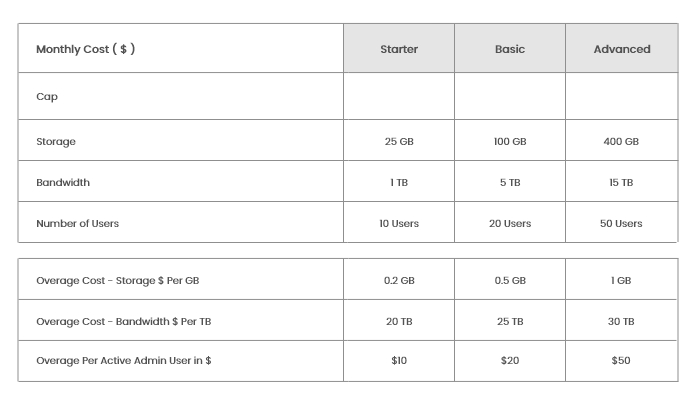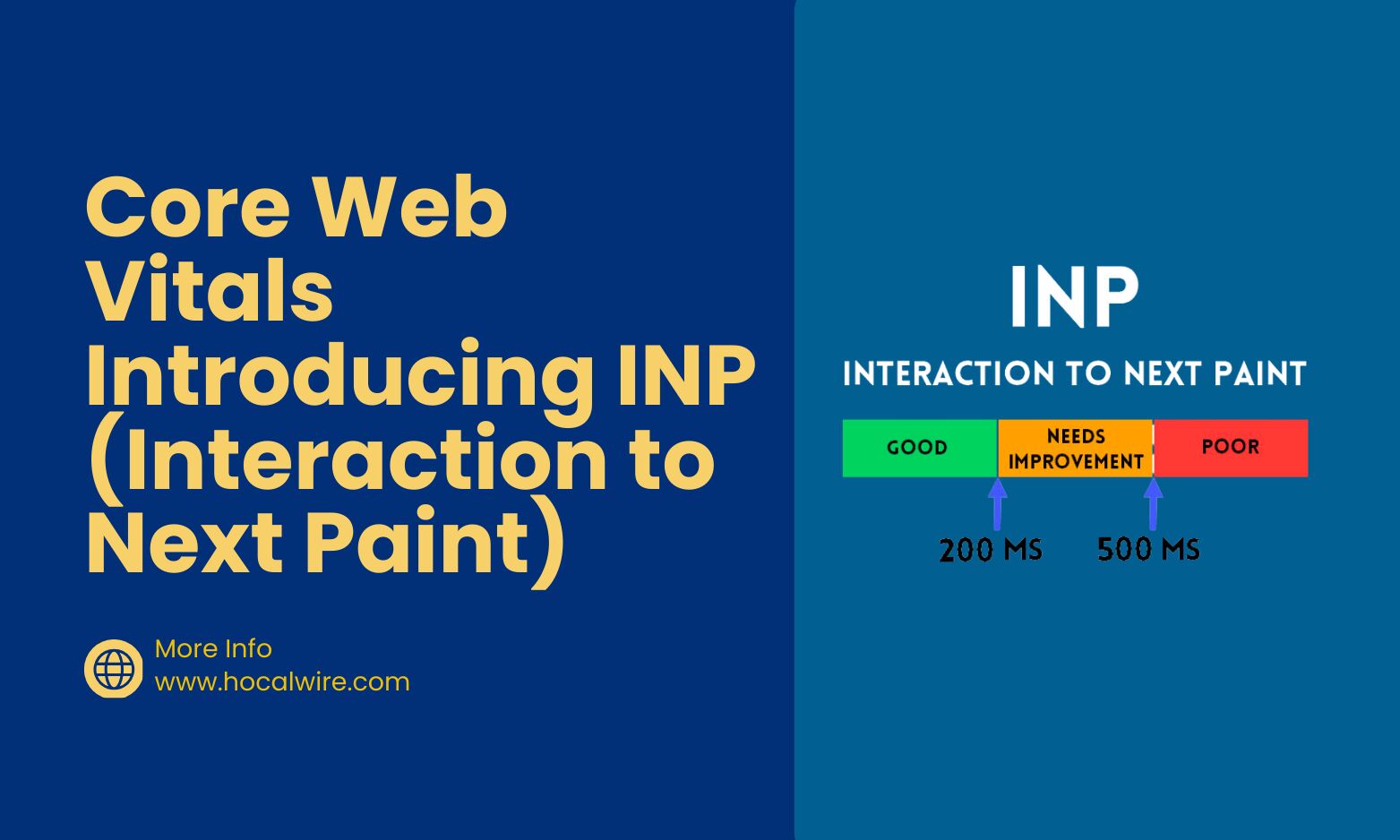



Core Web Vitals: Introducing INP (Interaction to Next Paint)
- The web performance statistic Interaction to Next Paint (INP) measures how responsive a website is to user interface inputs, such as clicks or actions.
- 1) Interaction to Next Paint (INP)
- 2) A better responsiveness metric
- 3) Google Search Console implications of this
- 4) What this means for site owners
- 5) CrUX and Goole Search Console
- 6) Identify and reduce input delay
To offer a set of quality indications for online sites, Google's Chrome Team unveiled the Core online Vitals at the beginning of 2020. To more accurately assess the level of user experience on a webpage, the Google Chrome team announced an impending update to the metrics for the Core Web Vitals. This post will discuss the changes and their implications for Google Search and website owners.
Although we all anticipated it, Google has now revealed the precise day on which Interaction to Next Paint will become a Core Web Vital. The important dates and actions to complete by March 12, 2024, are listed below!
Interaction to Next Paint (INP)
The proposed Core Web Vital metric Interaction to Next Paint (INP) will take the lieu of First Input Delay (FID) on March 12, 2024. INP uses information from the Event Timing API to evaluate responsiveness. INP tracks all clicks, taps, and any engagements with a page over time, ignoring anomalies, and reports the longest duration. When a page has a low INP, it can usually react fast to the great majority of user interactions.
A page with good responsiveness reacts to interactions quickly. The browser provides visual feedback in the next frame that renders when a page reacts to an interaction, indicating that the interaction was successful.
What is a good INP score?
A useful threshold to check if you're providing responsive user experiences is the 75th percentile of field-recorded page loads divided into desktop and mobile devices:
- Your page has good responsiveness if its INP is 200 milliseconds or fewer.
- If your page's INP falls between 200 and 500 milliseconds, it indicates that it needs to be more responsive.
- If your page's INP is more than 500 milliseconds, it indicates that it is not responsive well.
A better responsiveness metric
Google provided the following example of the INP timeline and lifecycle phases:
2022 May - Experimental
Chrome revealed INP experimental support.
May 2023: Subject to change
INP will now be a Core Web Vital metric, according to a statement from Chrome.
March 2024: FID is replaced with stable INP as a stable Core Web Vital metric.
Google has now revealed that INP will replace FID on March 12, 2024.
Google Search Console implications of this
In March 2024, INP will take the place of FID as the new statistic in the Core Web Vitals. INP will be included by Search Console in the Core Web Vitals report later this year to assist site owners and developers in taking the required actions and assessing their pages for the new metric. The Search Console report will switch from using FID measures for responsiveness to using INP metrics starting in March 2024.
Core Web Vitals now consist of-
- Largest Contentful Paint (LCP)
- Cumulative Layout Shift (CLS)
- and also Interaction to Next Paint (INP)
With the date now in hand, we can perform some computations. Core Web Vitals are based on a rolling 28-day period for your website and potentially individual web pages.
What this means for site owners
Assuming you have been following our instructions to enhance Core Web Vitals, you have already given your pages' responsiveness some thought. The FID enhancements provide a solid basis for enhancing INP and page responsiveness.
We strongly advise website owners to attain high Core Web Vitals to guarantee a positive user experience across the board and to succeed with search. Great website experience, however, entails more than just Core Web Vitals. Good rankings are not assured by good statistics found in the Core Web Vitals report in Search Console or third-party Core Web Vitals reports.
CrUX and Goole Search Console
At a higher level, you may start looking at your site's prior CrUX statistics to see how it has changed over the last month.
Next, use Google Search Console to examine your INP data and determine the estimated number of impacted URLs across desktop and mobile platforms. This will assist you in determining which pages are most impacted.
Start collecting detailed info
Once you've identified the pages most affected, you'll have a starting point for improving your INP scores quickly.
However, most programmes just display INP scores for each URL or sometimes even template. To acquire a more thorough comprehension, you possess two choices:
- Set up Google Analytics 4 (GA4) to measure site speed, but be prepared to add additional tracking for deeper insights.
- Implement a dedicated RUM (Real User Monitoring) solution that collects detailed information automatically.
Optimize interactions
Optimising a slow interaction is the next step once you've found it and can manually replicate it in the lab. There are three stages that interactions might go through:
1. The user's initial contact with the page causes the input delay, which terminates when the interaction's event callbacks start to operate.
2. The processing time, which includes the duration of event callbacks until they finish.
3. The presentation delay, or the amount of time it takes for the browser to show the subsequent frame with the interaction's visual outcome.
The total interaction delay is the product of these three stages. Each stage of an interaction adds a certain amount of latency to the whole interaction, so it's critical to understand how to optimise each stage to execute as quickly as feasible.
Identify and reduce input delay
The input delay occurs at the beginning of a user's engagement with a page. The duration of input delays may vary significantly based on the activities occurring on the page. This may be the result of fetch handling, timer functions, activity on the main thread (possibly from script loading, parsing, and compilation), or even from other interactions that happen quickly one after the other and overlap.
You want to minimise input latency in interactions so that they can start processing event callbacks as soon as possible, regardless of the cause of the delay.
Conclusion
Iteratively improving your site's INP is a process. If your website has a lot of interactivity, there's a significant probability that once you optimise one slow interaction in the field, you'll find more, which you'll need to optimise as well.
Sustaining INP requires perseverance. You can eventually get your page's responsiveness to the point where visitors are satisfied with the service you're offering. There's a considerable probability that you'll need to go through the same procedure again to optimise interactions that are unique to your consumers when you develop new features for them. It will require work and time, but it will be worthwhile.
To learn how Hocalwire may assist in transforming your current codebase into a beautiful mobile experience, Schedule a Demo right away.

